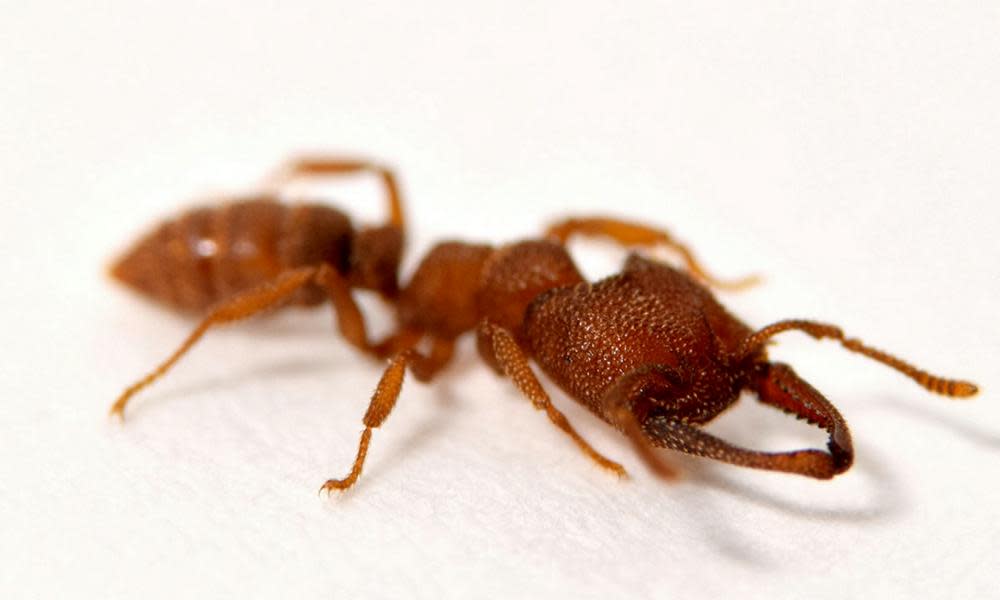Dracula ant's killer jaws are nature's fastest mover at 200mph

Move aside cheetah and peregrine falcon, there is a new contender for the title of fastest animal on Earth: the Dracula ant. Scientists have discovered that the small tropical insect can snap its mandibles at up to 90 metres a second (more than 200mph), the fastest animal movement on record.
The ants use the explosive motion to attack, stun and kill prey, which is then fed to their larvae.
“They’re cruising around underground and if they encounter something like a centipede or a termite they can smack them with the mandibles to kill or stun them,” said Andrew Suarez, an animal biology professor at the University of Illinois, who led the work. “They can then sting it to further incapacitate it and then they carry it back to the nest.”
The species, Mystrium camillae, was already known to have highly specialised appendages. However, scientists were able to ascertain the exact speed of the snapping motion only with the advent of high-speed video technology over the past 10 years. The scientists also used x-ray imaging technology to observe the ants’ anatomy in three dimensions to better understand how the movement works.
The observations showed that Dracula ants power up their mandibles by pressing the tips together, spring-loading them with internal stresses. Eventually, when one mandible slides across the other, each is released, in a similar motion to people clicking their fingers.
The Dracula ant’s motion is different from that seen in trap-jaw ants, which were previously considered to have the world’s fastest snapping jaws. Those ants start from an open position and suddenly snap shut like a mousetrap.
“Even among ants that power-amplify their jaws, the Dracula ants are unique,” said Adrian Smith, of the North Carolina Museum of Natural Sciences, who was a co-author of the study. “Instead of using three different parts for the spring, latch and lever arm, all three are combined in the mandible.”
Dracula ants are mostly found in the tropics in Africa and Asia. They live in large colonies underground, or inside tree trunks, so are rarely seen. Their name derives from their unusual feeding habits, which involves a form of non-destructive cannibalism. The adult ants are unable to process solid food; instead, they feed prey to their larvae and then chew holes in the larvae and drink their blood. Scientists call the arrangement a “social stomach”.
In future the team plan to make more detailed observations of the ants in action in their natural environment. “Their biology, how they capture prey and defend their nests, is still in need of description,” Smith said.
The findings are published in the journal Royal Society Open Science.

 Yahoo News
Yahoo News 